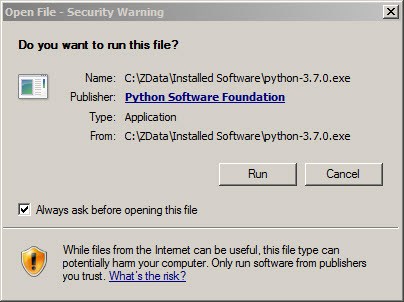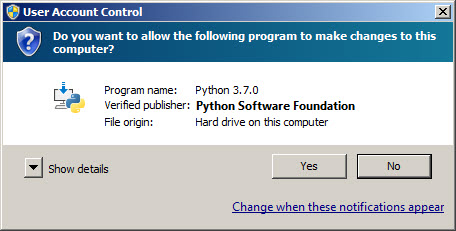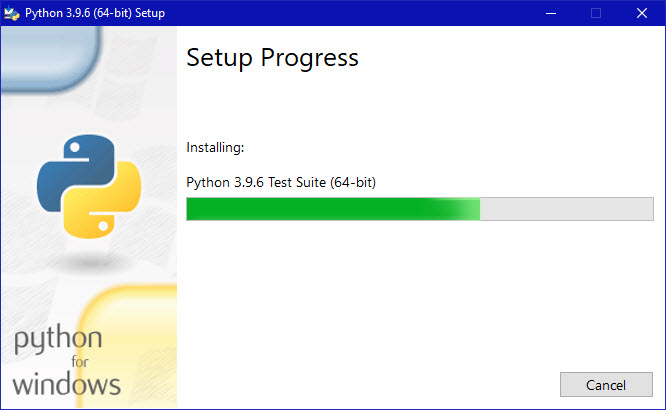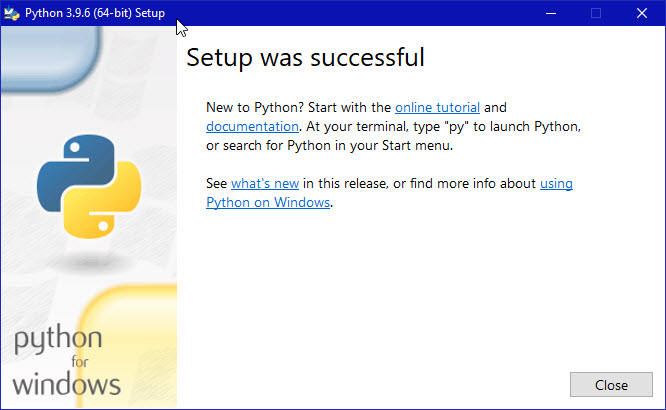Usually your Windows system is shipped without Python installation. Installing Python does not involve much more than downloading the Python installer from the python.org website and running it. Let's assume you have a Windows 7 OS installed on your machine and you intend to install the latest version of Python. Here are the instructions:
- Click Python Download. or you may type https://www.python.org/downloads/ on your browser. The following page will appear in your browser.

- Click the Download Python 3.7.0 button.The file named python-3.7.0.exe should start downloading into your standard download folder. This file is about 30 Mb so it might take a while to download fully if you are on a slow internet connection (it took me about 10 seconds over a cable modem).
- The file should appear as
- Move this file to a more permanent location, so that you can install Python (and reinstall it easily later, if necessary).
- Feel free to explore this webpage further; if you want to just continue the installation, you can terminate the tab browsing this webpage.
- Start the Installing instructions directly below.
Installing
- Double-click the icon labeling the file python-3.7.0.exe.An Open File - Security Warning pop-up window will appear.

- Click Run.A Python 3.7.0 (32-bit) Setup pop-up window will appear.
-
Ensure that the Install launcher for all users (recommended) and the Add Python 3.7 to PATH checkboxes at the bottom are checked.
If the Python Installer finds an earlier version of Python installed on your computer, the Install Now message may instead appear as Upgrade Now (and the checkboxes will not appear).
- Highlight the Install Now (or Upgrade Now) message, and then click it.A User Account Conrol pop-up window will appear, posing the question Do you want the allow the following program to make changes to this computer?

- Click the Yes button.A new Python 3.7.0 (32-bit) Setup pop-up window will appear with a Setup Progress message and a progress bar.

During installation, it will show the various components it is installing and move the progress bar towards completion. Soon, a new Python 3.7.0 (32-bit) Setup pop-up window will appear with a Setup was successfuly message.

- Click the Close button.
Verifying
To try to verify installation,- Navigate to the directory C:\Users\COVRI\AppData\Local\Programs\Python\Python37-32(or to whatever directory Python was installed: see the pop-up window for Installing step 3).
- Double-click the icon/file python.exe.The following pop-up window will appear.
-
A pop-up window with the title C:\Users\COVRI\AppData\Local\Programs\Python\Python37-32 appears, and inside the window; on the first line is the text Python 3.7.0 ... (notice that it should also say 32 bit). Inside the window, at the bottom left, is the prompt >>>: type exit() to this prompt and press enter to terminate Python.
You should keep the file python-3.7.0.exe somewhere on your computer in case you need to reinstall Python (not likely necessary).
You may now follow the instructions to download and install Java (you should have already installed Java, but if you haven't, it is OK to do so now, so long as you install both Python and Java before you install Eclipse), and then follows the instruction to download and install the Eclipse IDE. Note: you you need to download/install Java even if you are using Eclipse only for Python)



0 comments:
Post a Comment